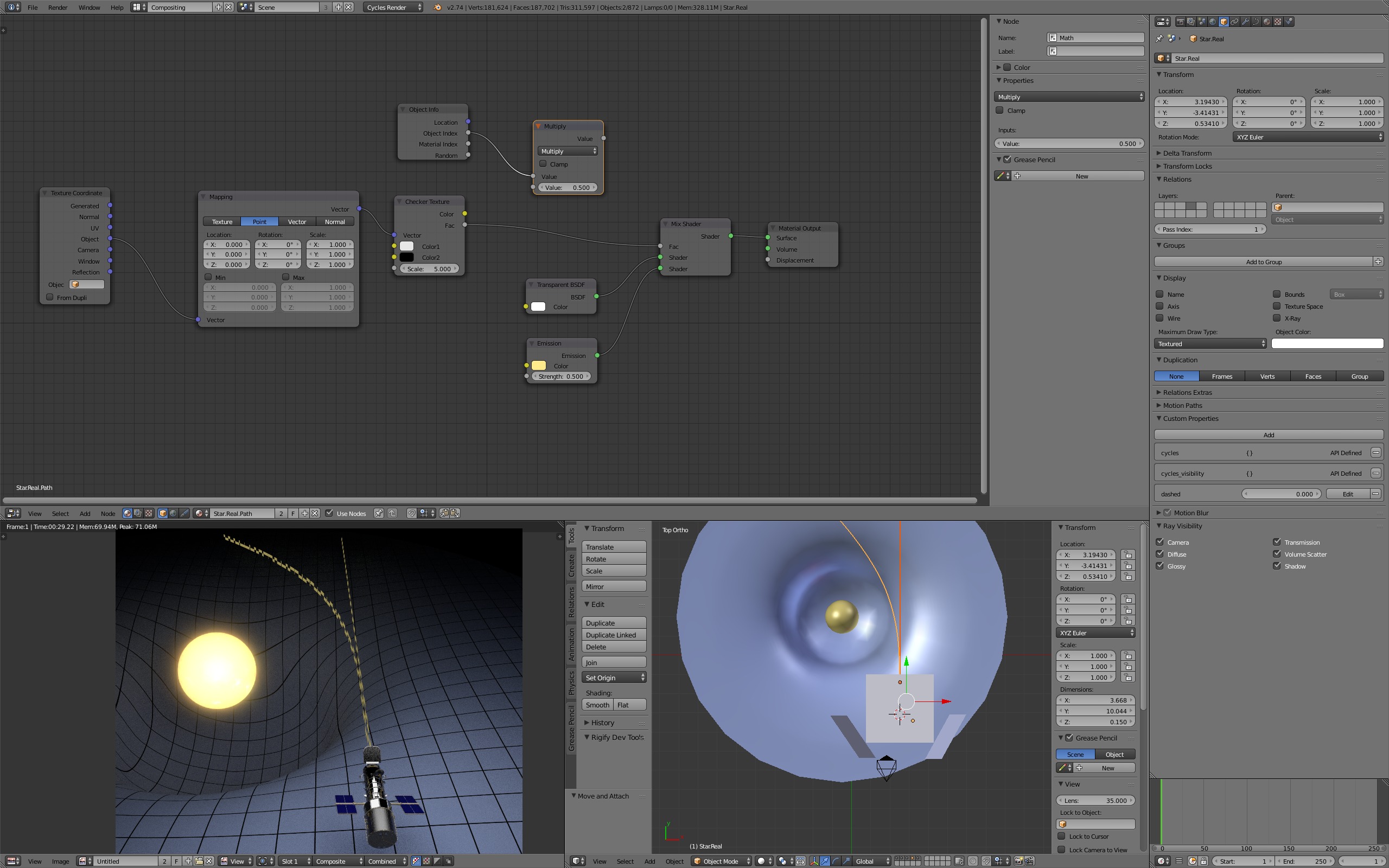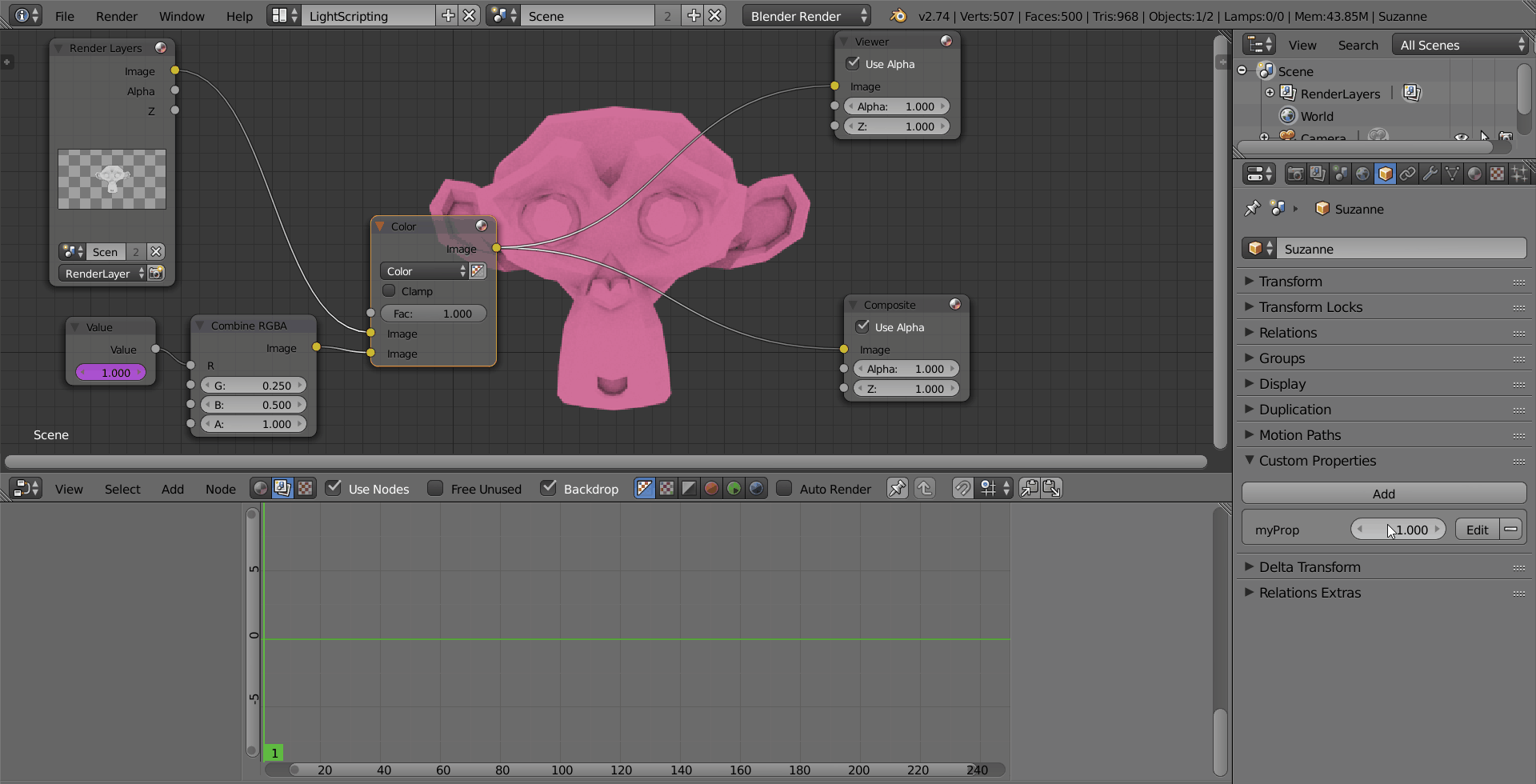An object's Custom Properties panel looks like a great way to inject variable values in the Compositor:
However, there does not seem to be an Input that defines a reference to the Object Data's Custom Properties.
In the above image, I wanted to reuse the same Material Node setup for two different objects. The difference being one has transparent checkers (to create a dashed line) and the other is solid.
Without using Python, Drivers, Empty objects, or Animation Nodes:
- Is it possible to pass variables (such as numbers and colours) into the Compositor?
- If not, how would you reuse a Material Node setup across multiple objects, but vary it depending on some value?
I thought about using the Object Index, but that seems like a lot of work just to toggle a multiplication factor.
This is a general-purpose question. I'm not asking specifically how to make a reusable dashed or non-dashed line (i.e., Transparent shader and Checkered Texture). I'm asking how to reference various types of variables within the Compositor so as to program Material Nodes with different capacities.





